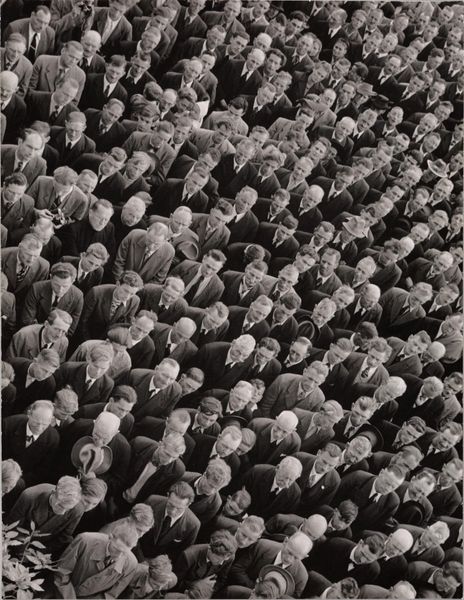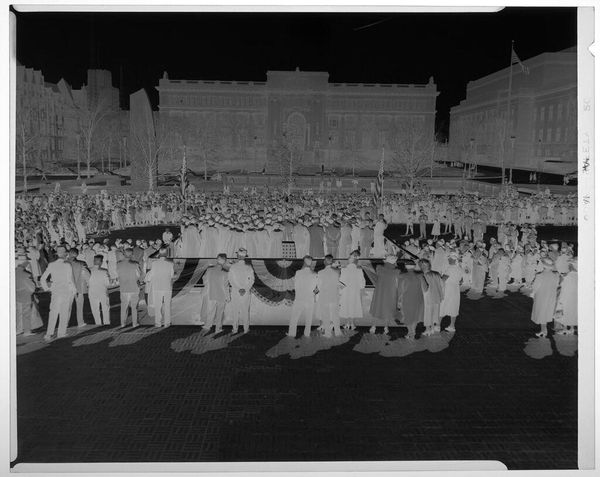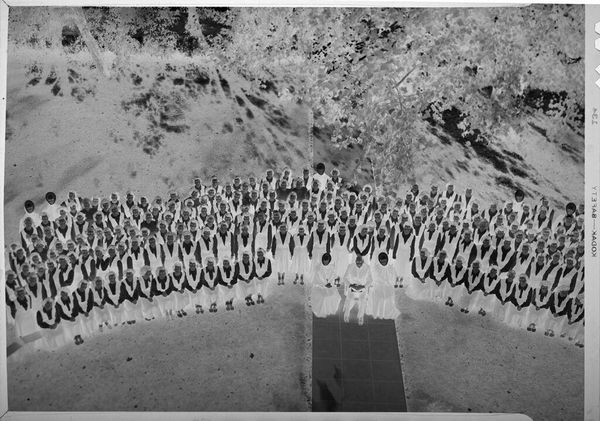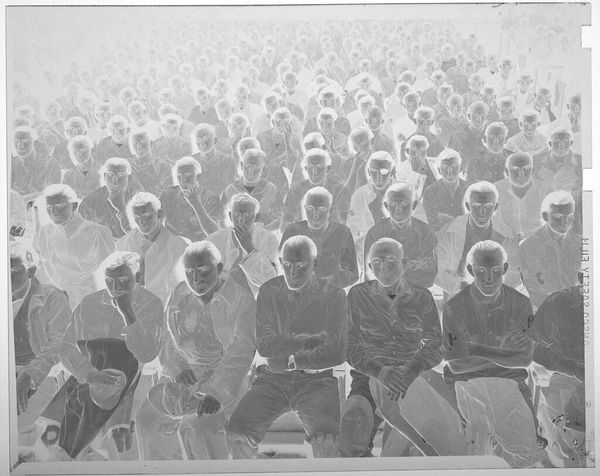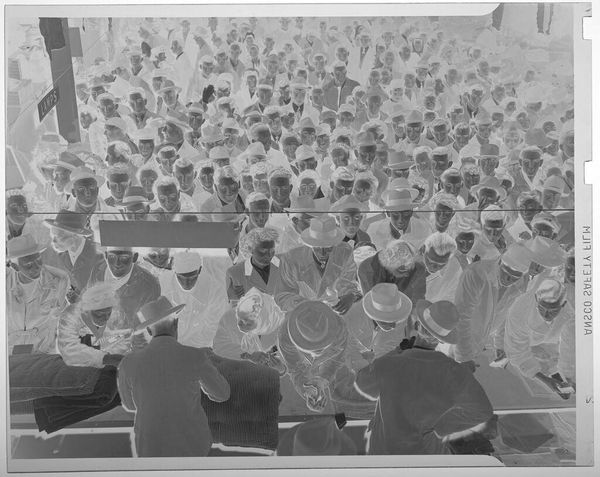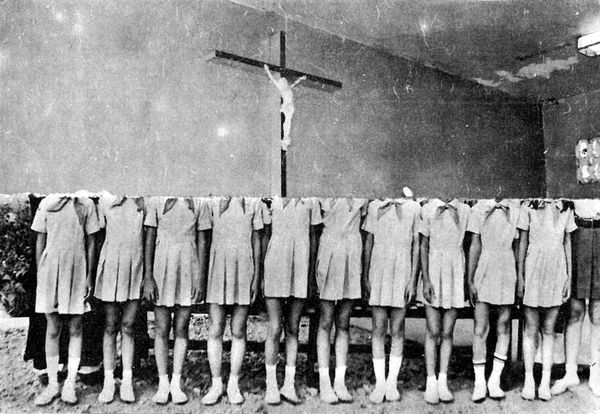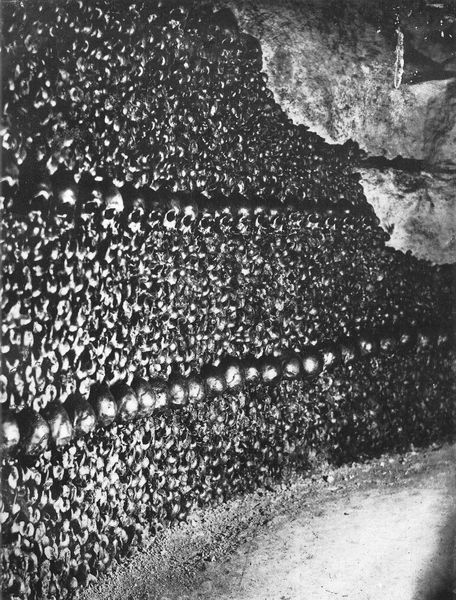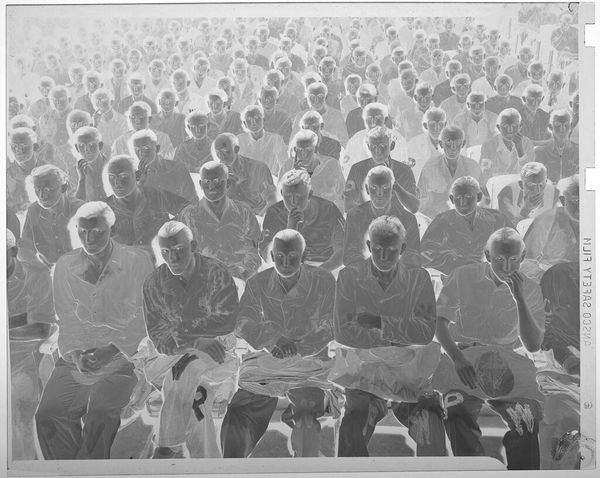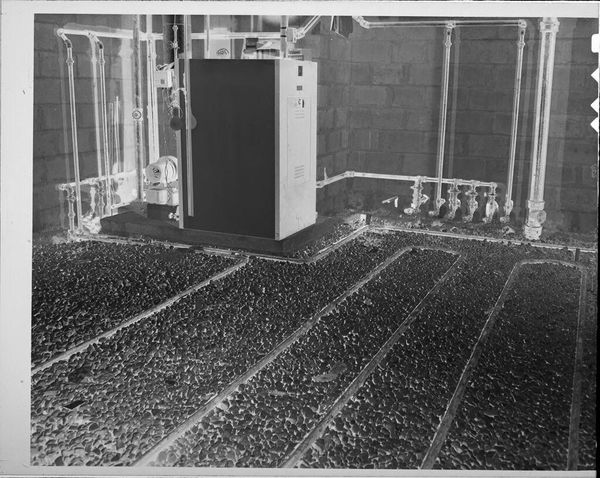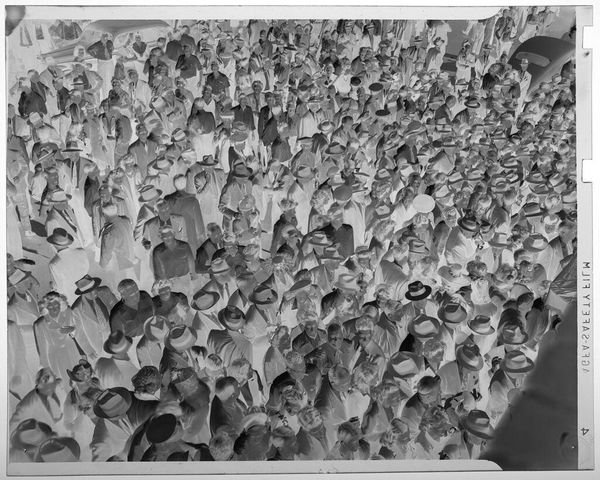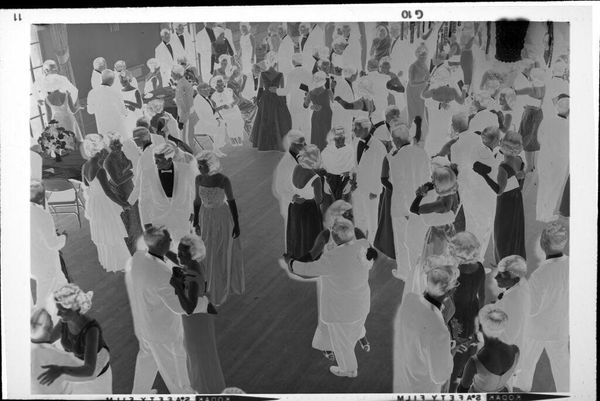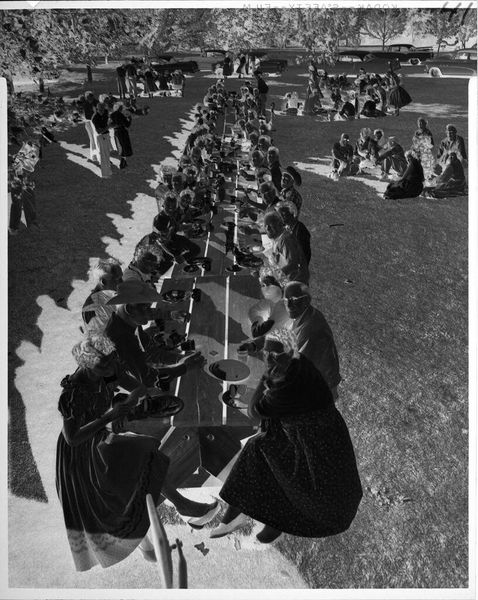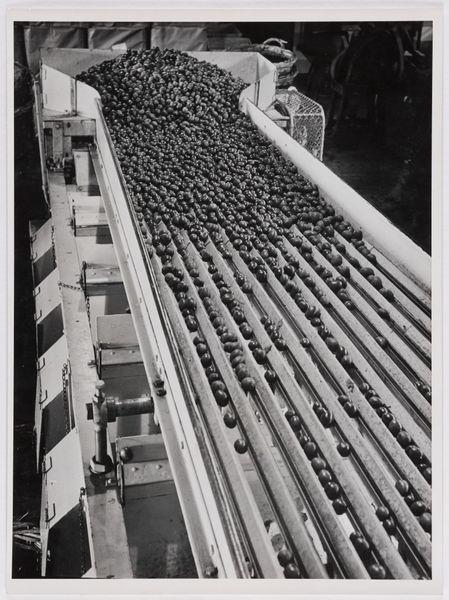
print, photography
#
portrait
# print
#
constructivism
#
photography
#
repetitive shape and pattern
#
organic pattern
#
geometric
#
group-portraits
#
geometric-abstraction
#
repetition of pattern
#
russian-avant-garde
#
repetitive pattern
#
monochrome
Copyright: Alexander Rodchenko,Fair Use
Curator: Here we have Alexander Rodchenko’s striking photograph, "Parade of the Dynamo Sports Club," taken in 1928. It’s a remarkable document of its time, captured in monochrome print. Editor: My initial impression is one of stark geometry. The rhythmic repetition of figures creates an almost hypnotic visual field. The scale is impressive too, hinting at a monumental event. Curator: Absolutely. Rodchenko, as a key figure in the Russian avant-garde and Constructivism, used photography to celebrate Soviet progress and the collective spirit. This image, featuring the Dynamo Sports Club, is a prime example of how sport became a tool for projecting strength and unity. Editor: You can really see the visual strategy in the sharp angles and the way the athletes are arranged to form a pattern. This echoes the abstract forms that are signature elements within the Constructivist movement. It flattens space. Are they people or shapes? Curator: That interplay is key! Rodchenko was intentionally breaking from traditional photographic perspective. By shooting from unusual angles—likely from above—he’s not just documenting a parade, but creating a symbol of the new Soviet order: organized, powerful, and aesthetically modern. Editor: There is an odd disconnect, though, the soft gray scale feels at odds with such an apparent show of strength. Curator: The Dynamo Sports Club, associated with the state security apparatus, gives the photograph political weight, indeed. Yet, Rodchenko, like many artists of the period, sought to align his art with the revolution, often walking a tightrope between artistic vision and state ideology. He believed in the power of photography to shape a new visual language for a new society. Editor: Ultimately, I see an almost dehumanizing effect despite the intent to celebrate the collective. The relentless uniformity borders on abstraction. Curator: Well, I appreciate how it prompts us to consider the complexities of art created within specific socio-political contexts. Editor: And for me, it emphasizes the enduring power of form and composition to affect our perception. Curator: Indeed. It is a powerful testament to Rodchenko's pioneering approach to photography.
Comments
No comments
Be the first to comment and join the conversation on the ultimate creative platform.
